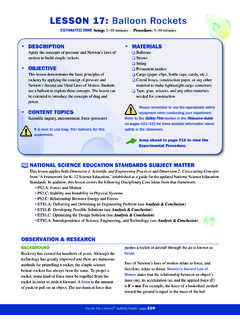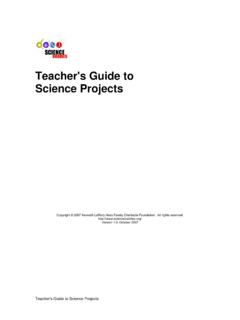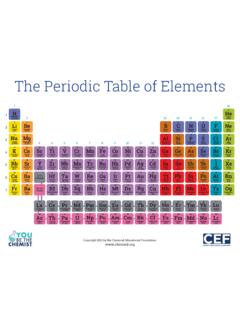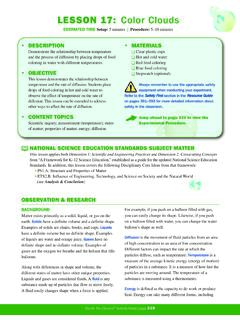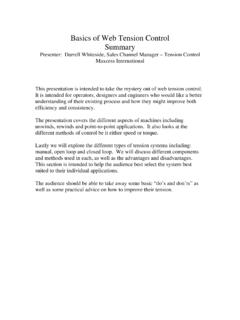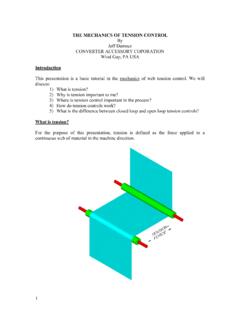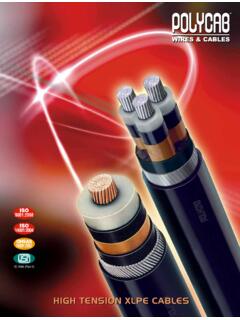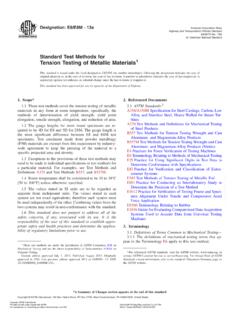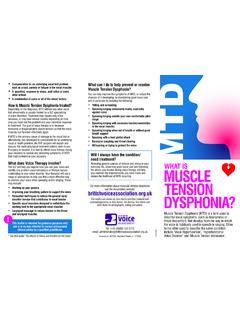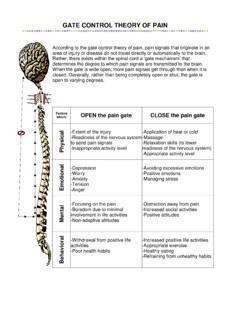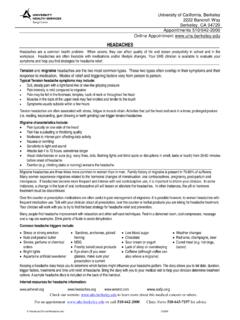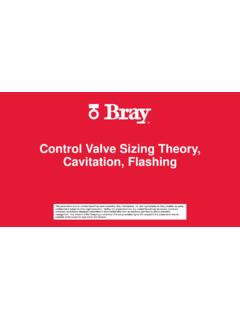Transcription of LESSON 7: Milk Rainbow
1 92 LESSON 1:Goofy Putty92 LESSON 1:Goofy PuttyYou Be The Chemist Activity Guides |page 92 You Be The Chemist Activity Guides |page 92 You Be The Chemist Activity Guides |page 92 You Be The Chemist Activity Guide |page 92 LESSON 7:Milk RainbowESTIMATED TIMES etup:5 minutes|Procedure:5 10 minutes DESCRIPTIONC reate swirls of color in milk and explore a propertyof liquids known as surface tension . OBJECTIVEThis LESSON will demonstrate the property of surfacetension and the effect that soap, a surfactant, has on thesurface tension of milk. Students will apply soap tomilk with food coloring on the surface to visualize theeffect of soap on the surface tension of milk. Thelesson can be extended to discuss a type of mixturescalled emulsions. CONTENT TOPICSS cientific inquiry; states of matter; properties ofmatter; attractive forces (surface tension ); mixtures MATERIALSoWhole milk oWaterproof plate or shallow bowl oFood coloring oLiquid dish soap oCotton swabsAlways remember to use the appropriate safetyequipment when conducting your to the Safe ty Firstsection in the Res our ce Gui deon pages 421 423 for more detailed information aboutsafety in the ahead to page 95 to view theExperimental & RESEARCHBACKGROUNDM atter exists primarily as a solid, liquid, or gas on theearth.
2 Solidshave a definite volume and a definite shape. Examples of solids are chairs, books, and a definite volume but no definite of liquids are water and orange juice. Gaseshave no definite shape and no definite of gases are the oxygen we breathe and thehelium that fills balloons. Along with differences in shape and volume, the differentstates of matter have other unique properties. For example,surface tensionis a property of liquids that describes theattraction of liquid particles at the surface. The strongattraction of particles at the surface of the liquid creates asurface film that makes moving an object through thesurface of a liquid more difficult than moving the objectwhen it is completely submerged in the liquid. Surfacetension is also the reason liquids tend to keep a low surfacearea. For example, water droplets will tend to form into asphere rather than spreading out is a white liquid produced by female mammals andis the primary source of nutrition for young mammalsNATIONAL SCIENCE EDUCATION STANDARDS SUBJECT MATTERThis LESSON applies both Dimension 1: Scientific and Engineering Practicesand Dimension 2: Crosscutting Conceptsfrom A Framework for K 12 Science Education, established as a guide for the updated National Science EducationStandards.
3 In addition, this LESSON covers the following Disciplinary Core Ideas from that framework: : Structure and Properties of Matter : Chemical Reactions : Forces and Motion : Influence of Engineering, Technology, and Science on Society and the Natural World (see Analysis & Conclusion)You Be The Chemist Activity Guide |page 93 LESSON 7:Milk Rainbowuntil they can digest other foods. Humans, especiallychildren, often consume the milk of other mammals as apart of their diet. In the United States, cow s milk isproduced on an industrial scale and is the mostcommonly consumed form of milk. Milk is made mostlyof water, but it also contains vitamins, minerals, fats, andproteins. Water has a very high surface tension because of strongattractions between the water molecules (hydrogenbonding). Because milk is primarily water, it also has a high surface tension .
4 In this experiment, the highsurface tension of the milk supports the dye moleculeson the surface and keeps the dye relatively centralized.(The tendency to keep a low surface area minimizes the distance that the dye will spread across the milk ssurface.) In contrast, soap is a surfactant. A surfactant(or surfaceactive agent) is a substance that has the ability to reducethe surface tension of a liquid. Therefore, when a drop of liquid dish soap is added to milk, the surface tensionof the milk is reduced. As this occurs, the fat (butterfat)and protein particles in the milk can move more freelyand easily. In addition, the soap interacts with the fat andprotein particles in the milk, causing the particles tomove around. This action can be seen as the dye swirlsthrough the & EQUATIONSMilk is a liquid made mostly of water, but it also containsvitamins, minerals, fats, and proteins. Milk is a uniquesubstance known as a colloid, so it does not have aspecific chemical formula.
5 A colloidis a mixture in whichvery small particles are spread evenly through anothersubstance. In milk, the fat globules, proteins, vitamins,and minerals are spread throughout the water. The molecules that make up soaps and detergents havetwo main parts (ends) that behave differently. One end ofa soap molecule is attracted to water, while the othercomponents are repelled by water but attracted to drops of liquid dish soap are added to milk with drops of food coloring on thesurface, the soap will reduce the surface tension ofthe milk and react with the fat. This interaction willcause the particles in the milk to move around andcreate swirls of TO THE YOU BE THECHEMISTCHALLENGEFor additional background information, pleasereview CEF s Challenge study materials online Additional information on states of matter andproperties of matter, including surface tension ,can be found in the Classification of Mattersection of CEF s Passport to Science Exploration:The Core of FactThe fat content of milk dependson the type of milk (skim, whole,etc.)
6 And the type of cow. Holstein-Friesian cows tend toproduce milk with a lowerpercentage of butterfat thanJersey Be The Chemist Activity Guide |page 94 LESSON 7:Milk RainbowLOWER GRADE LEVELS/BEGINNERSUse LESSON 15: Floating Paper Clipsto introduce the concept of surface tension . Then, perform thisexperiment to add some color to the LESSON and explore the concept further! Pour small drops of water on a plate to illustrate surfacetension. Students should notice that the water does notspread out completely. Instead, it will form droplets, andthose droplets will attract other small droplets to formlarger puddles. HIGHER GRADE LEVELS/ADVANCED STUDENTSDESCRIPTIONE xamine the composition of the milk and how soapinteracts with the components of the LESSON examines the properties and composition ofmilk and uses soap to illustrate the effects of surfactantson the properties and components of & RESEARCHMost of the things around us are mixtures, like the air webreathe and the orange juice we drink!
7 A mixtureis made of two or more substances that are combined are generally classified as homogeneous orheterogeneous. A homogeneous mixtureis a type ofmixture that is considered to be the same , like apple juice, are homogeneous mixtures. A heterogeneousmixture is a type of mixture in which themakeup is not the same throughout. They are not evenlymixed. For example, pepperoni pizza and chicken noodlesoup are heterogeneous mixtures. Not all mixtures,however, are simply homogeneous or heterogeneous. Milk is classified as a colloid. A colloid is a mixture inwhich very small particles are spread evenly throughanother substance. It is a type of mixture betweenhomogeneous and heterogeneous. Specifically, milk is atype of colloid called an emulsion. Emulsionsconsist ofliquids spread through other liquids. The liquids in anemulsion do not completely mix like the particles in asolution do.
8 Instead the particles of one liquid aresuspended in the other. Emulsions generally have a cloudyappearance and will often separate if not continuouslymixed. Examples of emulsions include mayonnaise and oiland vinegar salad is a natural emulsion of fats (oils) and proteins spreadthroughout water. Raw milk will eventually separate, withthe fat rising to the top. However, store-bought milkgenerally looks homogeneous. The reason is that moststore-bought milk goes through a process calledhomogenization that breaks down the fat particles so themilk appears to have a uniform consistency. Because milk is mainly made of water, it has propertiessimilar to water, such as a high surface tension . Surfacetensionis a property of liquids that describes the attractionof liquid particles at the surface. The strong attraction ofparticles at the surface of the liquid creates a surface film that makes moving an object through the surface of a liquidmore difficult than moving the object when it is completelysubmerged in the liquid.
9 Soap is a surfactant. A surfactantis a substance that hasthe ability to reduce the surface tension of a , when a drop of liquid dish soap is added to milk,the surface tension of the milk is reduced. As this occurs,the fat and protein particles in the milk can move morefreely and easily. In addition, the molecules that make upsoaps and detergents have two main parts (ends) thatbehave differently. The ends attracted to fat will move andclump together around the fat particles. As this movementoccurs, the dye moves through the milk as well, creatingcolorful swirls in the TO THE YOU BE THECHEMISTCHALLENGEFor additional background information, pleasereview CEF s Challenge study materials online Additional information on properties of matter,mixtures, and colloids can be found in theClassification of Matter section of CEF s Passportto Science Exploration: The Core of IN THE CLASSROOMYou Be The Chemist Activity Guide |page 95 LESSON 7:Milk RainbowNOTESEXPERIMENTATIONAs the students perform the experiment, challenge them toidentify the independent, dependent, and controlledvariables, as well as whether there is a control setup for theexperiment.
10 (Hint: If soap is not added to the milk, do theresults change?) Review the information in the ScientificInquiry section on pages 14 16 to discuss PROCEDURE1. Fill the plate with whole milk, and let the milk settle for a Add several drops of different food coloring close together, but separate, in the center of the plate of Dip a cotton swab in the liquid dish soap, and then touch the tip of the cotton swab to the milk ssurface near the drops of food coloring. Observe the Then, move the swab to different areas of the plateto initiate more COLLECTIONHave students record data in their science notebooks oron the following activity sheet. What happened when thedye was first added to the milk? What happened whenthe soap was added? Have students answer the questionson the activity sheet (or similar ones of your own) to guidethe Be The Chemist Activity Guide |page 96 LESSON 7:Milk RainbowANALYSIS & CONCLUSIONUse the questions from the activity sheet or your ownquestions to discuss the experimental data.
